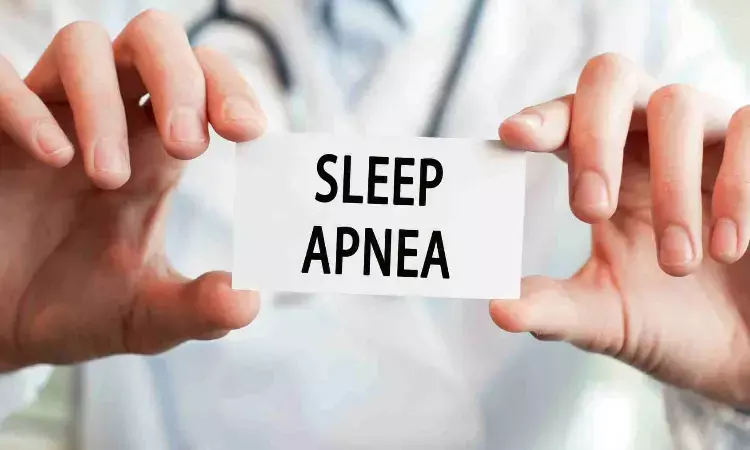- Home
- Medical news & Guidelines
- Anesthesiology
- Cardiology and CTVS
- Critical Care
- Dentistry
- Dermatology
- Diabetes and Endocrinology
- ENT
- Gastroenterology
- Medicine
- Nephrology
- Neurology
- Obstretics-Gynaecology
- Oncology
- Ophthalmology
- Orthopaedics
- Pediatrics-Neonatology
- Psychiatry
- Pulmonology
- Radiology
- Surgery
- Urology
- Laboratory Medicine
- Diet
- Nursing
- Paramedical
- Physiotherapy
- Health news
- Fact Check
- Bone Health Fact Check
- Brain Health Fact Check
- Cancer Related Fact Check
- Child Care Fact Check
- Dental and oral health fact check
- Diabetes and metabolic health fact check
- Diet and Nutrition Fact Check
- Eye and ENT Care Fact Check
- Fitness fact check
- Gut health fact check
- Heart health fact check
- Kidney health fact check
- Medical education fact check
- Men's health fact check
- Respiratory fact check
- Skin and hair care fact check
- Vaccine and Immunization fact check
- Women's health fact check
- AYUSH
- State News
- Andaman and Nicobar Islands
- Andhra Pradesh
- Arunachal Pradesh
- Assam
- Bihar
- Chandigarh
- Chattisgarh
- Dadra and Nagar Haveli
- Daman and Diu
- Delhi
- Goa
- Gujarat
- Haryana
- Himachal Pradesh
- Jammu & Kashmir
- Jharkhand
- Karnataka
- Kerala
- Ladakh
- Lakshadweep
- Madhya Pradesh
- Maharashtra
- Manipur
- Meghalaya
- Mizoram
- Nagaland
- Odisha
- Puducherry
- Punjab
- Rajasthan
- Sikkim
- Tamil Nadu
- Telangana
- Tripura
- Uttar Pradesh
- Uttrakhand
- West Bengal
- Medical Education
- Industry
Tirzepatide Demonstrates Consistent Efficacy in OSA Across All Severity Levels, suggests research

A recent post-hoc analysis of the SURMOUNT-OSA trials revealed that tirzepatide significantly improves obstructive sleep apnea (OSA) symptoms and cardiometabolic parameters compared to placebo. These benefits were consistent regardless of patients' baseline OSA severity or use of positive airway pressure (PAP) therapy.
Tirzepatide improved indicators of OSA and cardiometabolic parameters, such as body weight (BW), systolic blood pressure (SBP), sleep apnea specific hypoxic burden (SASHB), apnea- hypopnea index (AHI), and C-reactive protein (CRP), in participants with moderate-to-severe OSA and obesity in the SURMOUNT-OSA clinical trials. Thus, to assess the relationships between tirzepatide therapy and changes in these indicators relative to a placebo by baseline OSA severity, Liao and colleagues carried out this investigation.
Over a 52-week period, two Phase 3 trials compared the effects of tirzepatide at its highest tolerated dose (10 mg or 15 mg once weekly) vs a placebo in persons with moderate-to-severe OSA and obesity. The participants in Study 2 were receiving positive airway pressure (PAP) treatment, whereas those in Study 1 were not.
The OSA severity categories were roughly similarly weighted by baseline AHI in these post-hoc analyses for on-treatment patients with non-missing baseline AHI measurements (moderate, AHI ≥15 to <30; severe, AHI ≥30 to <70; very severe, AHI ≥70). For binary outcomes, OSA-related measurements were examined using logistic regression; for continuous variables, mixed-model repeated measures were used.
The results revealed inconsistent relationships between baseline OSA severity and changes in cardiometabolic parameters or OSA measurements in both trials. Among Study 1 subjects not on PAP, there were significant differences across severity groupings for change difference in AHI and percent body weight decreases.
Across all severity categories, tirzepatide was linked to substantial decreases in AHI, SASHB, SBP, and BW when compared to placebo in Studies 1 and 2. In all trials, tirzepatide was substantially more likely than a placebo to reduce AHI by at least 50% across all severity categories. With the exception of the Study 1 extremely severe subgroup, tirzepatide significantly increased the probabilities of reaching an AHI of less than five or an AHI of five to fourteen with an Epworth Sleepiness Scale score of less than 10.
Although only the severe subgroup in both studies showed significant differences, tirzepatide was shown to reduce high-sensitivity CRP more than a placebo in all severity groups. Overall, tirzepatide was linked to substantial improvements in measures of OSA and cardiometabolic parameters in these post-hoc analyses of the SURMOUNT-OSA investigations.
Source:
Liao, B., Falcon, B., Bednarik, J., Xie, C., & Rapoport, D. M. (2025). Measures related to obstructive sleep apnea after tirzepatide treatment by baseline OSA severity: Post-hoc analyses of SURMOUNT-OSA. American Journal of Respiratory and Critical Care Medicine, 211(Abstracts), A5207–A5207. https://doi.org/10.1164/ajrccm.2025.211.abstracts.a5207
Neuroscience Masters graduate
Jacinthlyn Sylvia, a Neuroscience Master's graduate from Chennai has worked extensively in deciphering the neurobiology of cognition and motor control in aging. She also has spread-out exposure to Neurosurgery from her Bachelor’s. She is currently involved in active Neuro-Oncology research. She is an upcoming neuroscientist with a fiery passion for writing. Her news cover at Medical Dialogues feature recent discoveries and updates from the healthcare and biomedical research fields. She can be reached at editorial@medicaldialogues.in
Dr Kamal Kant Kohli-MBBS, DTCD- a chest specialist with more than 30 years of practice and a flair for writing clinical articles, Dr Kamal Kant Kohli joined Medical Dialogues as a Chief Editor of Medical News. Besides writing articles, as an editor, he proofreads and verifies all the medical content published on Medical Dialogues including those coming from journals, studies,medical conferences,guidelines etc. Email: drkohli@medicaldialogues.in. Contact no. 011-43720751


